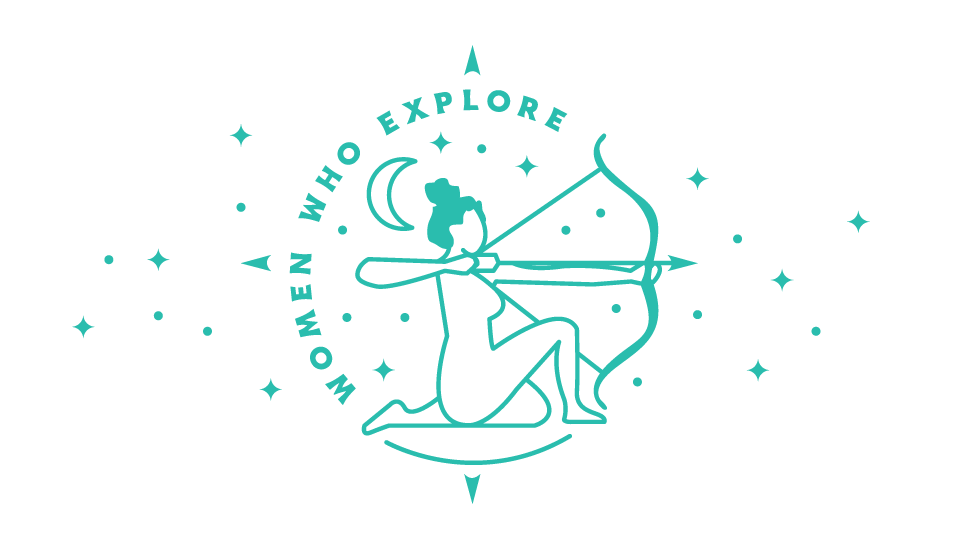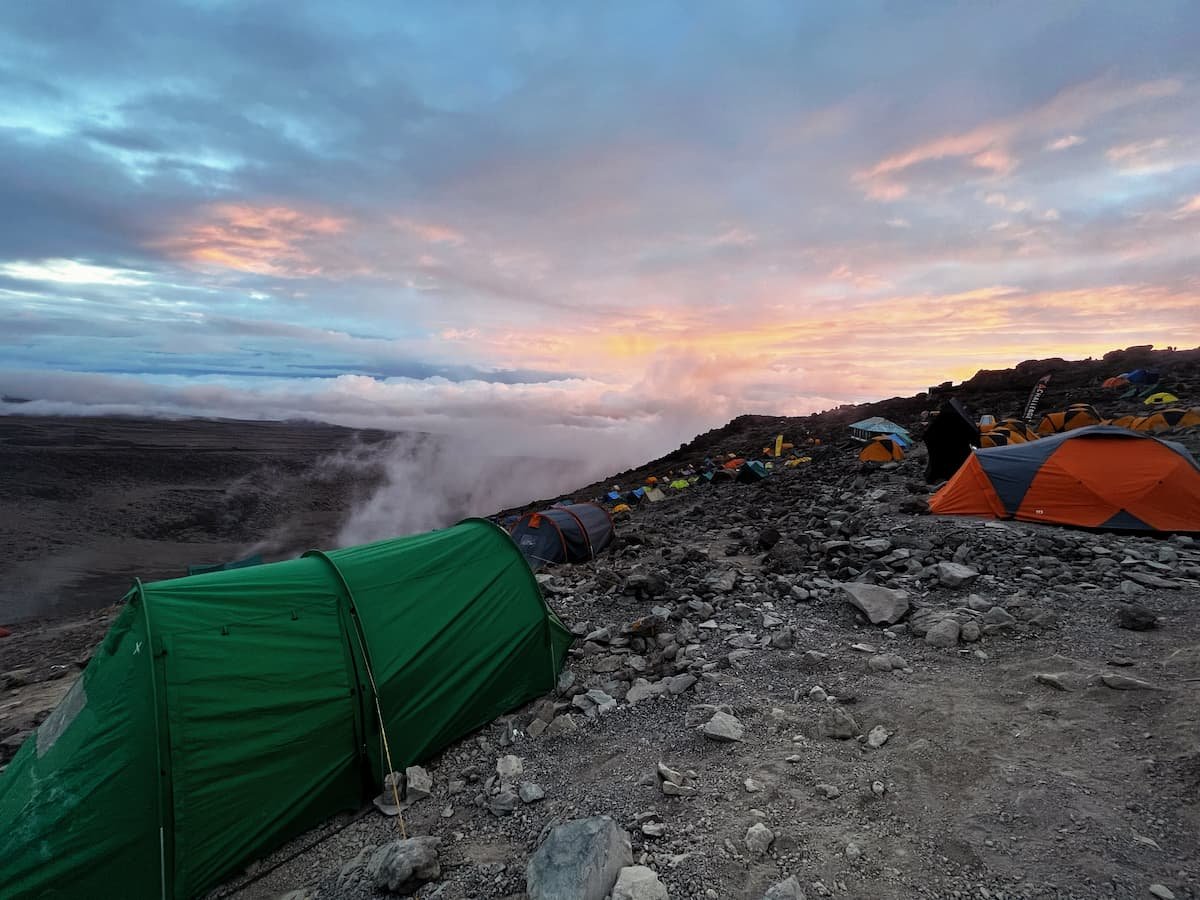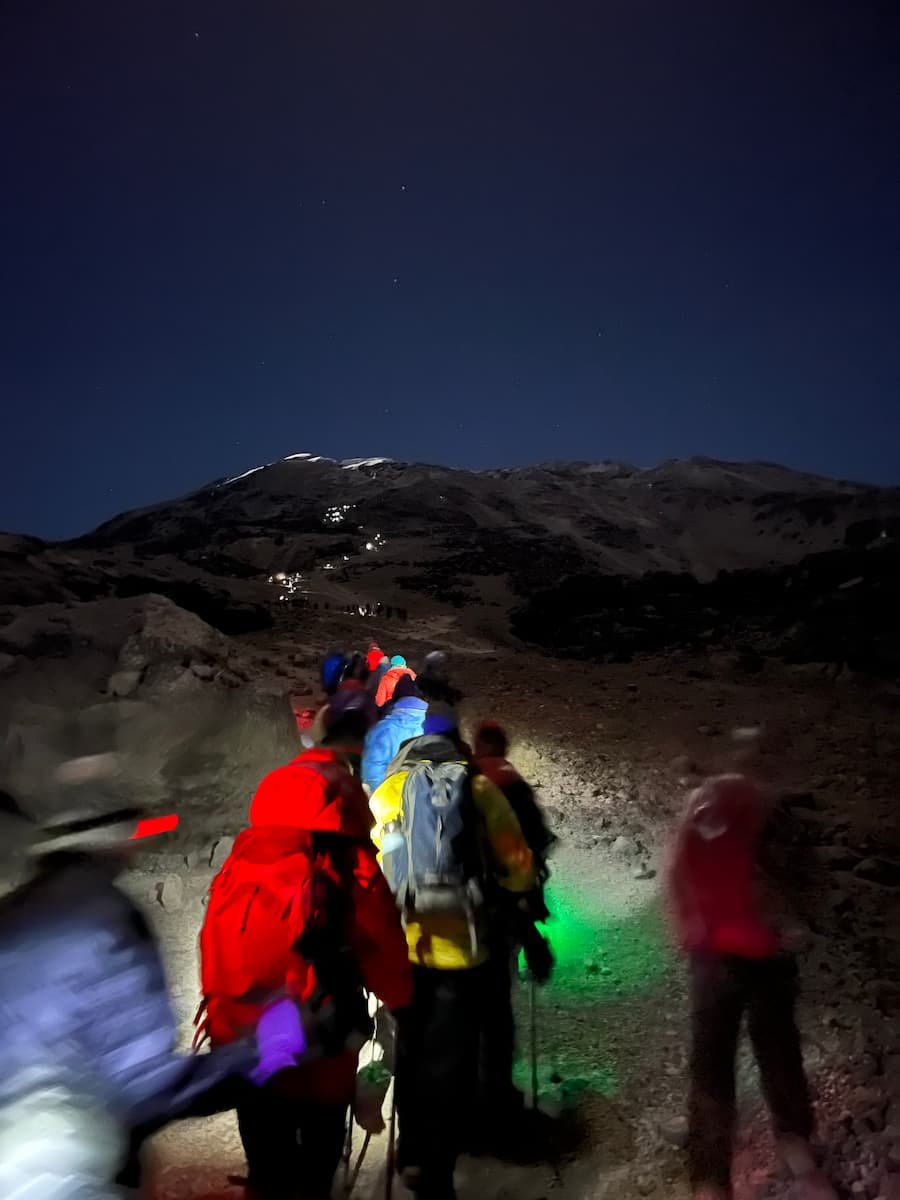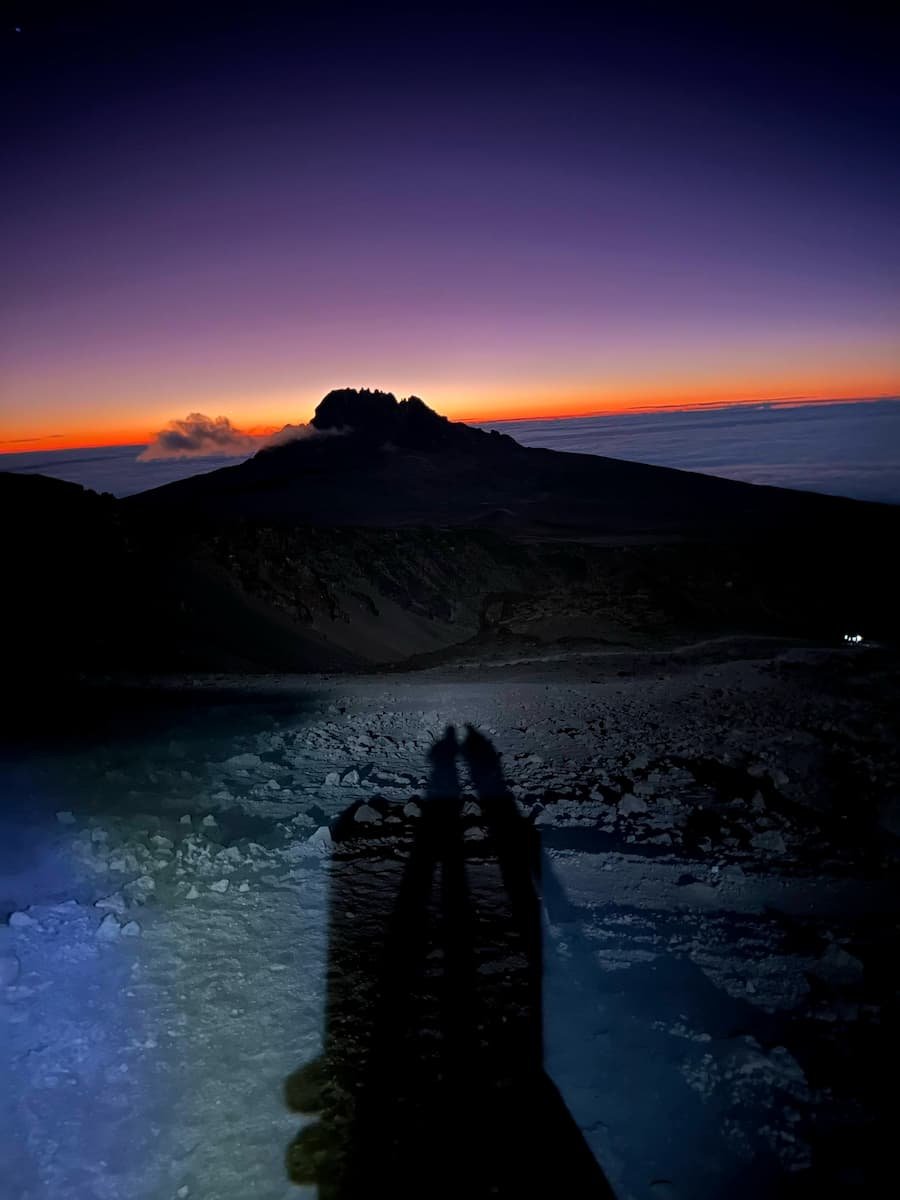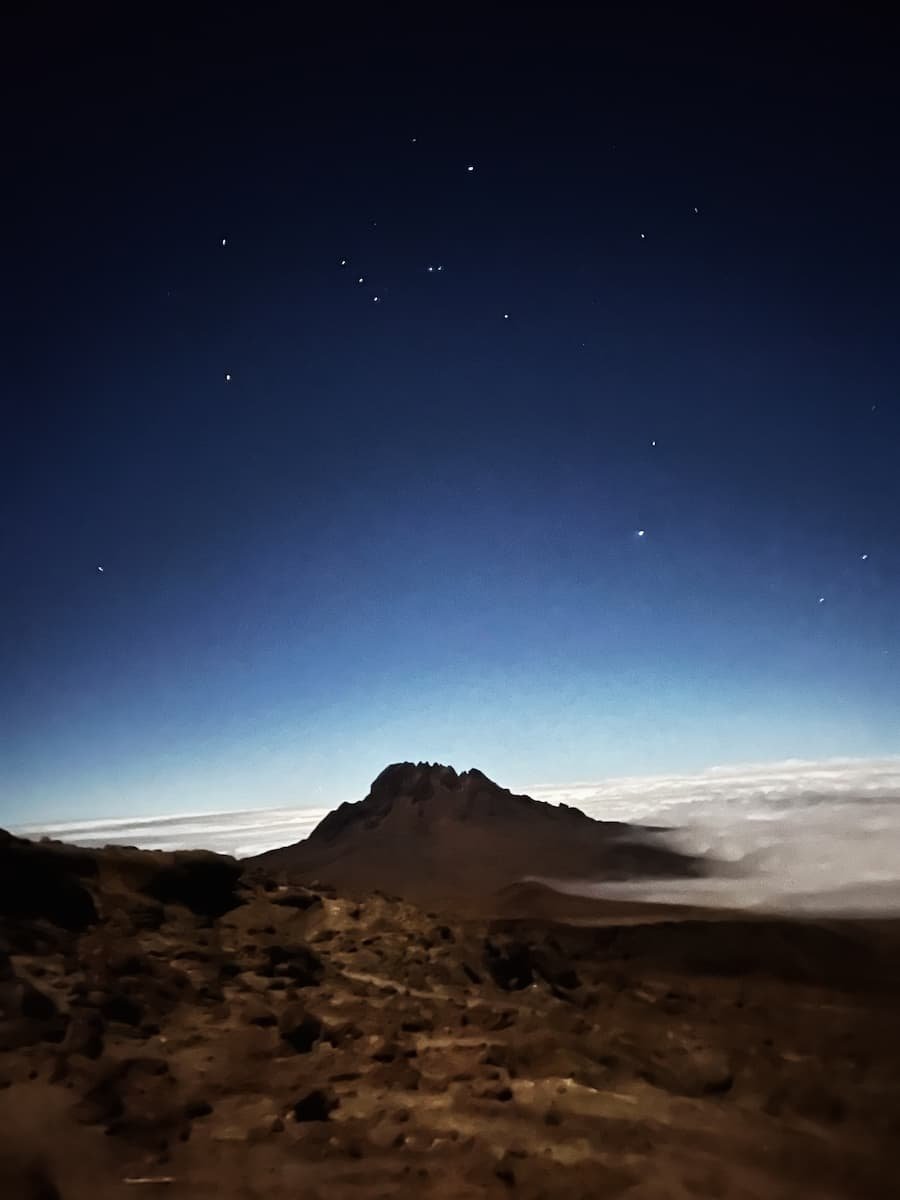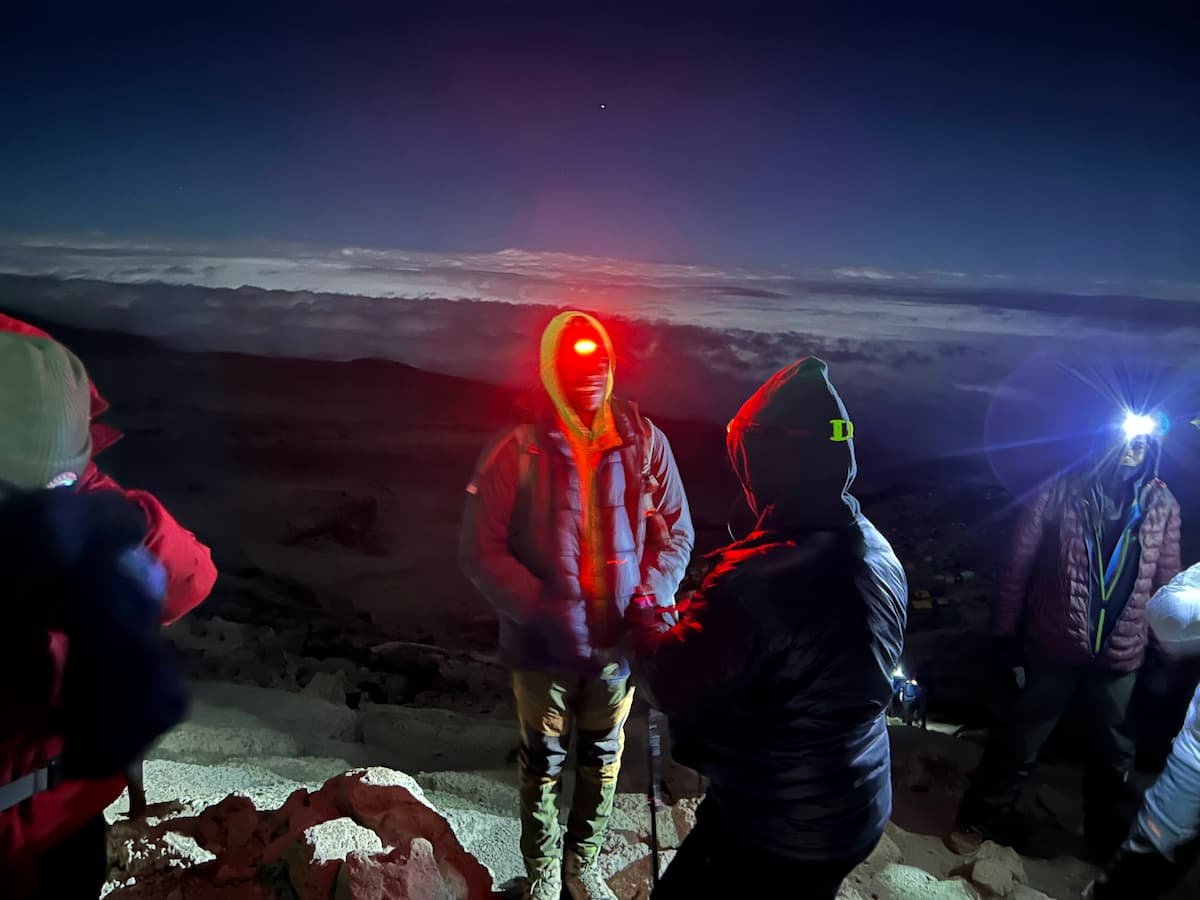It’s Summit Night on Kilimanjaro
Sunset before summit night!
I’m carefully placing one foot in front of the other at approximately 17,800 feet. The sun has not risen yet, though I’ve been hiking for what seems like an eternity. The excitement of waking up at 11pm for a 12am start feels like a distant memory. I stare down at my boots and focus on each step. I focus on my breathing, on wiggling my fingers to keep them warm, on not letting my eyes drift towards the long line of trekkers ahead of me.
It’s summit night on Kilimanjaro. The previous 5 days, our guides have kept us at the classic “pole pole” pace. This has seemed excruciatingly slow at times, but tonight I understand why they do it. Not only does it conserve energy and help acclimate you to the higher elevation, but it’s training hikers to accept a slower pace. They are preparing everyone for summit night.
On each day of our trek, our guide Paul, would only inform us about the details of the following days journey. We were to be fully present on the day we were trekking and only discuss the next day after dinner was finished. I’m usually the type that wants to know each and every detail outlined before me. The details make me feel in control, but I decide to take his advice and just embrace the present. We did not speak about summit night until necessary, which did indeed help me to stay in the moment on the trek.
At lunchtime on day 5, we arrive at Barafu Camp, the final camp before summiting. Anticipation is definitely building as we’re taking our photos at the sign with the summit so clear in the background. The camp is buzzing with energy from both the trekkers and support teams. Pots and pans are clanging as lunches are being prepared in haste so trekkers can hopefully get some rest that afternoon. During lunch, Paul gives us the basic outline. We will spend that afternoon trying to get as much sleep as possible. We will wake for dinner at 5pm and then head back to our tents to rest until our wake-up call at 11pm.
Four layers on the bottom, four layers on top. I lay that out in my tent. There’s a breeze that evening and I worry about wind at the summit, so I add an extra layer. My backpack is ready to go with a few extra hot hands, my favorite summit candy, and the Women Who Explore banner for photos at the summit. Sleep is fitful, but at least I manage to doze off for an hour or two.
I’m already awake when Edson, our group waiter, unzips the rainfly of my tent and I hear the now familiar voice say, “Meleesa, it’s summit night! Can I see your face?”. This is code for “are you appropriate, may I unzip the inner tent flap to make sure you’re fully awake?”. I’m given my coffee with one sugar and I start to dress. I do not hear even a wisp of a breeze which is a relief. I feel surprisingly good and am very excited to start the hardest part of our trek.
I see the other women and we’re looking a bit like the over-layered kid from A Christmas Story. We eat a little breakfast, but with anxiety running a bit high, we don’t eat much. I’m stuffed so tight in all my layers that I can’t manage to lean over to put on my gaiters. The group is all moving a bit more slowly than usual and we’ve already missed our 12am start time. I can feel a little frustration from Paul as he takes my gaiters and tries to help, but they just won’t fit with four layers of pants. Regretfully I leave them behind and as we start hiking, I wonder how much I’ll miss them on the decent.
We start slow and steady as usual. Two hours into the climb I begin to wonder if I will find any of the trek difficult. I have felt great and not struggled at all thus far. I pull out my phone and play the song Matthew McConaughey by Shwayze since “Alright, alright, alright” had become our motivating phrase of the trip. I play it to make the group smile. They do. Alright, alright, alright are the only lyrics I can say before running out of breath, but I still feel good.
At about 16k feet our group separates. One of our team needs to hike a bit more slowly so two of our guides, Paul and Hussein, opt to hang back with her. We trudge on ahead and I try not to think about the possibility that we might not see her at the summit.
At first, the long line of trekkers and their headlamps are exciting, seeing them wind endlessly up the mountain. At a certain point though, it becomes discouraging. In the dark, moving so slowly, it’s very easy to lose track of time and distance. Looking up only reminds me that I have no idea where I’m at on the mountain and that the summit looks no closer than it did an hour before… or was it two hours? With Paul and Hussein further down the mountain, the rest of our guides move us at a pace slightly faster than a snail, but I begin to wonder “what happened to pole pole”?! I’m finding myself far more winded than I have at any other point in the trek.
The day before, Paul talked about a point on summit night where we would hit a wall. It’s an invisible line that people cross and become far more likely to feel like giving up. He said in that moment we would have to dig deep into our well and push through. I crossed this line and felt it as though it were an actual physical wall that was dropped in front of me. I felt like laying down, like crying, like giving up. I looked toward the horizon to see if there was even a hint of sunrise and felt a stabbing pain behind my eyes. Note to self, moving eyeballs at about 17,800ft hurts. Also, no sunrise.
Then I heard Paul. I heard his deep, accented voice below us singing. Music is a big part of the Kilimanjaro trek. People play music on little speakers along the trail. The support team of guides and porters sing when we arrive at camp. There is so much joy in the music on the mountain. Right then, I realized that I had hit the wall Paul had talked about and in that moment of feeling so alone and exhausted, had been unable to dig deep to get myself through. As the rest of our guides began to sing to us though, I felt tears welling up. Paul came up beside us and all 6 guides were singing together. I could hear our names sprinkled throughout. I had to work hard not to cry. I wasn’t worried about sharing the emotion, but expending that amount of energy on tears might have been the end of summit night for me. As the guides continued to sing, I stole a glance at toward the horizon and I saw the first glint of the sun rising.
The songs ended and I could feel the sun on my nose. I knew I had it within me to make it to the summit. I took a deep breath and looked up and not far in the distance was the Stella Point sign. I had made it to the point that I knew 100% that I would make it to Uhuru Peak and summit Kilimanjaro. Summiting Kilimanjaro is a community effort and honestly, I wouldn’t want it any other way.
Author: Melissa Wright is Co-Owner of Women Who Explore. She manages the marketing and branding as well as hosting trips throughout the year. Her preference is leading treks that take women out of their comfort zones and shows them just how strong and capable they are.
